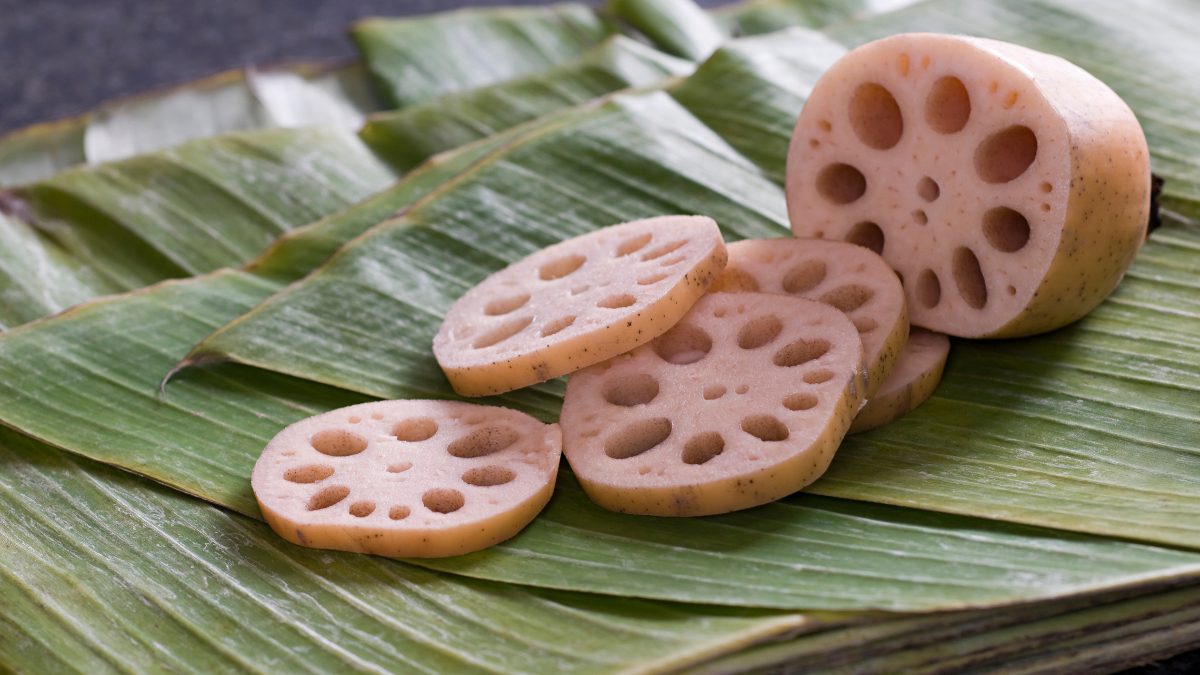Lotus root, often referred to as “Kamal Kakdi” or “Kamal Niroot” in Hindi, holds a special place in both ancient Indian traditions and modern kitchens. This peculiar-looking vegetable has a unique appearance, resembling a string of connected pods. It has also been celebrated for its medicinal properties and culinary versatility for centuries. And today, it finds a place in our kitchens in many ways. Let’s take a look at the journey of this vegetable.
Lotus Root’s Journey From Ritual To Recipe

In ancient India, the lotus held profound symbolic significance. Revered as a sacred flower in Hinduism and Buddhism, the lotus also symbolises purity, enlightenment, and divine beauty. Its roots, submerged in muddy waters yet yielding pristine blossoms, served as a powerful metaphor for spiritual growth and transformation. But beyond its symbolism, ancient Indian civilizations recognised the lotus root for its remarkable healing properties.
Ayurveda, often dubbed the “science of life,” is one of the world’s oldest holistic healing systems, originating in India over 5,000 years ago. In this ancient system, lotus root also emerged as a prized ingredient, revered for its numerous health benefits.
According to Ayurvedic texts, lotus root is believed to possess cooling properties. It makes it particularly beneficial for pacifying excess heat or Pitta dosha, in the body. Lotus root is also said to have astringent and tonic properties. It makes it valuable for promoting digestive health and strengthening the immune system.
Discover Its Role In Modern Wellness Cuisine

Fast forward to modern times, and the lotus root continues to captivate culinary enthusiasts and health-conscious individuals alike. With its subtle flavour, crisp texture, and nutrient-rich profile, lotus root has found its way into kitchens across India and beyond. From traditional recipes to contemporary fusion dishes, this versatile ingredient adds a unique dimension to culinary creations.
In Indian cuisine, lotus root is commonly used in both vegetarian and non-vegetarian dishes. It is prized for absorbing flavours and imparting a delightful crunch. In North India, it is often sliced and added to curries, stir-fries, and salads, lending its distinct texture to hearty dishes like “Kamal Kakdi ki Sabzi.” On the other hand, in South India, it is frequently incorporated into traditional dishes such as “Thoran” or “Kamal Kakdi Rasam,” showcasing its versatility across regional cuisines.
Beyond its culinary appeal, lotus root garners attention for its nutritional benefits. Low in calories yet rich in dietary fibre, vitamins, and minerals, including vitamin C, potassium, and manganese, lotus root offers a nutritious addition to any meal.
In modern times, the lotus root certainly remains a symbol of ancient wisdom and natural wellness.
Cover Image Courtesy: Canva
For more such snackable content, interesting discoveries and the latest updates on food, travel and experiences in your city, download the Curly Tales App. Download HERE.





